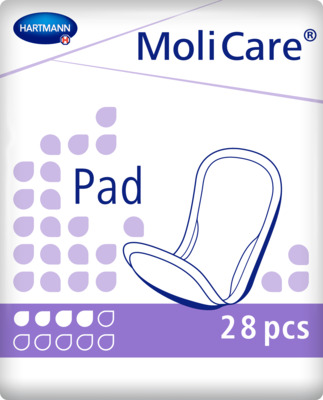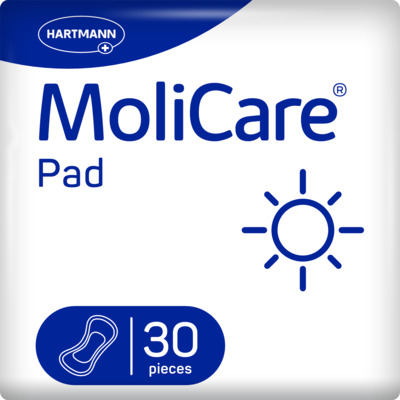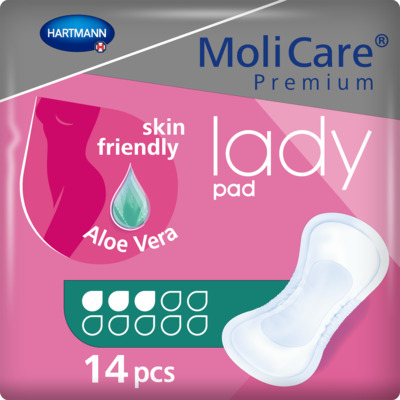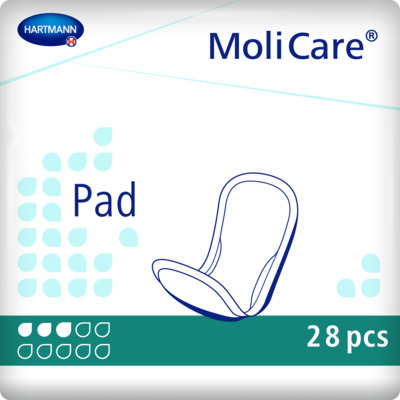Active living
What Is The Fastest Way To Get Rid Of A Bladder Infection
Are you experiencing pain or discomfort when urinating? This could be a sign of a bladder infection. But how do you know if you have a bladder infection? What is the fastest way to get rid of a bladder infection? In this article, you will learn everything that you need to know about bladder infections, including causes, signs, symptoms, prevention and remedy techniques.

What Is A Bladder Infection?
Bladder infections, medically called cystitis, are a form of urinary tract infection (UTI). These infections primarily originate from bacteria that enter the urinary system. These bladder infections are more prevalent in women than men.
This is due to the anatomical differences between genders. Women have a shorter urethra, meaning bacteria has a shorter distance to travel to the bladder. Additionally, the close proximity of the urethra to the anus in women increases the risk of bacteria from the large intestine migrating and causing an infection.
The fastest way to get rid of a bladder infection
- Sources
- What Is A Bladder Infection
- What Causes A Bladder Infection
- Symptoms Of A Bladder Infection
- Bladder Infection Symptoms In Young Children
- How To Get A Bladder Infection Diagnosed
- Finding Treatment For A Bladder Infection
- How To Prevent A Bladder Infection
- The Fastest Way To Get Rid Of A Bladder Infection
- FAQs
What Causes A Bladder Infection?
To get rid of a bladder infection quickly, you must understand the causes. After all, bladder infections are usually the result of bacteria intruding on the urinary system. This problem usually originates from the urethra, which can then ascend into the bladder, prompting an infection.
Several factors can increase the likelihood of developing a bladder infection. Being aware of these can help in prevention and early intervention:
Sexual Activity: Frequent or recent sexual intercourse can introduce bacteria into the urethra, especially in women.
Previous UTIs: A history of urinary tract infections can make you more prone to future occurrences.
Birth Control Methods: Using spermicide-coated condoms, diaphragms, or spermicides as standalone birth control can alter the natural bacterial balance, increasing infection risk.
Urinary Obstructions: Conditions like kidney stones or ureteral reflux can impede urine flow, creating an environment prone to bacterial growth.
Anatomical Irregularities: Structural or functional abnormalities in the urinary tract can increase susceptibility to infections.
Diabetes: Those with diabetes may have a compromised immune response, making it harder to fend off bacteria.
Urinary Catheters: Prolonged use of a urinary catheter can introduce and harbour bacteria in the bladder.
Genetic Factors: Some people may have a hereditary predisposition to UTIs, making them more susceptible.
Male-specific Factors: For men, factors such as being uncircumcised or engaging in insertive anal sex can increase the risk.
Hygiene Practices: Wiping from back to front after a bowel movement can transfer bacteria to the urethra, especially in women.
Understanding these risk factors is crucial for understanding what is the fastest way to get rid of a bladder infection. If you believe you're at risk, your GP can provide guidance on preventive measures and early detection.

Symptoms Of A Bladder Infection
As you learn about what is the fastest way to get rid of a bladder infection, you need to be aware of the signs and symptoms. If you or someone you know is experiencing the following symptoms, it may indicate a bladder infection:
Pain or Burning Sensation During Urination: This is often the first sign many people notice. It can be sharp or persistent, making the act of urinating uncomfortable.
Frequent Urination: The urge to urinate more often than usual, even if the volume is minimal.
Urgency to Urinate: A sudden need to urinate may be harder to control.
Hematuria: Presence of blood in the urine, which can give it a pink or reddish tint.
Lower Abdominal Discomfort: A dull ache or pain in the lower abdomen or pelvic region.
Altered Urine Appearance: Urine that appears dark, cloudy, or has a potent odour.
General Malaise: Feeling unwell, fatigued, or under the weather without a clear reason.
Bladder Infection Symptoms In Young Children
For young children, who might not be able to communicate their discomfort as clearly, additional symptoms to watch out for include:
Fever: A temperature of 100.4° F (38° C) or higher.
Weakness: A noticeable decrease in energy or activity levels.
Irritability: Unexplained fussiness or mood changes.
Reduced Appetite: A sudden disinterest in food or refusal to eat.
Vomiting: Especially if it's recurrent and not linked to another known cause.
Consult your GP if you or a loved one has experienced these symptoms.

How To Get A Bladder Infection Diagnosed
Identifying a bladder infection is crucial for effective treatment to get rid of a bladder infection quickly. Typically, the diagnosis process begins with a simple urine test. This test can provide insights into the presence and nature of the infection.
Here's a breakdown of the diagnostic methods:
Urinalysis: This is a test where the urine is examined for the presence of white blood cells. A higher count of these cells can indicate an ongoing infection in the urinary tract.
Urine Test: Examination of a urine sample in a laboratory. The aim is to encourage the growth of bacteria from the sample. This confirms the presence of an infection and identifies the specific bacteria responsible. Furthermore, it helps in determining the most effective antibiotic for treatment.
For those who experience bladder infections repeatedly, more in-depth diagnostic procedures might be necessary, especially on how to get rid of a bladder infection quickly.
These tests can identify underlying issues in the urinary system or detect the presence of kidney stones:
- Computed Tomography (CT) Scan: This imaging test provides detailed visuals of the urinary tract, helping in spotting abnormalities or obstructions.
- Ultrasound: A non-invasive method, ultrasound uses sound waves to create images of the kidneys, bladder, and surrounding structures.
- Cystoscopy: In this procedure, a thin tube with a camera (cystoscope) is inserted into the urethra to examine the bladder's interior. This is useful in identifying issues within the bladder lining or urethra
Skin Care Products
Explore our skin care products now
Finding Treatment For A Bladder Infection
As you follow our guidance on how to get rid of a bladder infection quickly, you should also be aware of treatment methods that can ease the process.
Antibiotics:
Antibiotics target and eliminate the bacteria responsible for the infection. While they can be highly effective, you should consult your GP regarding your symptoms first. This ensures a thorough eradication of the bacteria and reduces the risk of recurrence.
Pain Management:
Some medications are designed to numb the bladder and urethra, relieving the burning sensation often associated with UTIs. These can be available both over-the-counter and by prescription.
Home Remedies:
As well as medical expertise, several home remedies can help in getting rid of a bladder infection fast:
Pain Relievers: Over-the-counter pain medications can help manage discomfort.
Stay Hydrated: Drinking fluids can help flush out bacteria. (NOTE: these fluids should not be non-bladder irritants; use these bladder–friendly drinks in your daily routines).
Warmth: Applying a hot water bottle to the lower abdomen can soothe pain.
Loose Clothing: Wearing non-restrictive clothing can reduce irritation.
Frequent Urination: Regularly emptying the bladder can prevent bacterial multiplication.
Limit Sexual Activities: Avoid sexual intercourse during an active infection to prevent further irritation.
Bed Protection: To further protect your sleeping routines from potential bladder infection leaks, consider using incontinence bed protection.
How To Prevent A Bladder Infection
To prevent a bladder infection, you must understand what’s good for bladder infections, to ease and relieve pain. Increasing fluid intake, for instance, can aid in flushing out potential irritants and bacteria from the urinary system. Additionally, urinating immediately after intercourse is recommended. While there isn't concrete evidence to suggest this directly prevents bladder infections, urinating can help expel germs that might have entered the bladder during sex.
Switching to alternative birth control methods might also reduce the risk of bladder infections. For postmenopausal women, vaginal oestrogen can be beneficial too. If you or someone that you know has become pregnant, make sure to be aware of the correlation between pregnancy and incontinence.
Maintaining good hygiene practices is also important to prevent a bladder infection. For example, wiping from front to back after bowel activity can prevent the transfer of bacteria from the anal region to the urethra. Use MoliCare© skin barrier cream as part of your toiletry routines.
Further tips to prevent a future bladder infection include:
- Regularly drinking 8 cups of water.
- Urinate when necessary.
- Changing underwear daily.
Changes in diet (if recommended by GP).
Incontinence Bed Protection
The Fastest Way To Get Rid Of A Bladder Infection
In truth, the fastest way to get rid of a bladder infection is by consulting your GP. Of course, you are welcome to follow the tips and guidelines recommended in this article, but these should only be brought forward once your bladder infection has been diagnosed. For further tips and guidance regarding bladder and other incontinence-related issues in regards to how to control and prevent cystitis.
FAQs
Can you flush out a bladder infection?
Drinking plenty of water can help flush bacteria from the urinary system, potentially reducing the severity or duration of the infection. However, water alone is unlikely to completely cure a bladder infection, especially if it's more severe or caused by resistant bacteria. Antibiotics prescribed by your GP will aid in treating and eliminating the infection.
How long does it take to flush out a bladder infection?
The duration of a bladder infection varies depending on its severity and the treatment used. With appropriate antibiotic treatment, symptoms usually improve within 1-3 days. Without treatment, the infection can persist, worsen, or spread to the kidneys.
Sources
Lloyds Pharmacy (n.d.) Spermicide. [online] Available at: https://lloydspharmacy.com/blogs/sexual-health/spermicide [accessed 20/09/23]
GOV.UK. (n.d.) Urinary Tract Infection: Diagnostic Tools For Primary Care. [online] available at: https://www.gov.uk/government/publications/urinary-tract-infection-diagnosis [accessed 20/09/23]

MoliCare Pad 4 Drops
<h2>Handy MoliCare Pad 4 Drops to Carry on the Go</h2> <p>Our MoliCare® Pad 4 Drops are an essential product for those experiencing slight incontinence, allowing you to regain control and live your busy and active life without the interference of bladder weakness. Designed for both men and women, this pad for men and women offers exceptional dryness and protection, ensuring your comfort and confidence.</p> <h2>‘Barely There’ Reassurance and Reliability</h2> <p>The MoliCare® Pad 4 Drops are slimline, discreet, and adjusted to fit your body seamlessly. It fixes securely inside your underwear, providing a ‘barely there’ comfort feel. With its soft and skin-kind fabric, along with a wide adhesive fixing strip on the backsheet, you can go about your day with the assurance of being protected against leakages.</p> <p>The absorbent core effectively prevents your skin from becoming too moist, while the elastic anti-leak edging adds an extra layer of security and peace of mind. Say goodbye to any worries about odours, as the MoliCare® Pad 4 Drops also neutralises odours to keep you fresh and confident throughout the day. Don't let incontinence hold you back from living life to the fullest.</p> <p>Ordering your MoliCare® Pad 4 Drops is hassle-free, as we offer fast and discreet delivery direct to your door. With our price match promise, you can trust that you're getting the best value for your money. Plus, enjoy free delivery on all orders over £40.</p> <p>If you need assistance in finding the perfect incontinence product for your needs, our friendly customer care team is here to help. Don't hesitate to reach out to us at 0800 028 9470. Take control of your life with the reliable protection and comfort of the MoliCare® Pad, alongside other <a href="https://www.hartmanndirect.co.uk/incontinence-products/incontinence-pads" style="color:#0563c1; text-decoration:underline">incontinence pads</a>.</p> <p> </p>
MoliCare Pads for Day
<h3>Incontinence pads for protection during the day </h3> <p>Even slight bladder weakness can be a burden in everyday life. There is a simple and affordable solution for this: MoliCare® Pad Day delivers discreet, reliable protection that helps you manage life’s daily challenges. </p> <p>The highly absorbent core inside the incontinence pads quickly locks away urine to ensure a pleasantly dry feeling on the skin. At the same time, it neutralises unpleasant odours. </p> <p>MoliCare® Pad Day are designed for discreet protection during the day. You can recognise the daytime incontinence product by the sun symbol on the packaging. They complement MoliCare® Pad Night incontinence pads which provide reliable protection at night. </p> <h3>Who is MoliCare® Pad Day suitable for? </h3> <p>MoliCare® Pad Day incontinence pads are suitable for people with mild bladder weakness. They leak anywhere from a few drops to 100 ml of urine between visits to the toilet. </p> <p>Incontinence pads are suitable for active women and men users whose mobility is not restricted. They can go to the toilet independently and without assistance. </p> <h3>Cheap incontinence products: comfortable, discreet protection </h3> <p>The incontinence pads have a highly absorbent core and odour control to keep you feeling fresh and comfortable. Thin and flexible, MoliCare® Pad Day are designed to be discreet, invisible under your clothing. Thanks to the wide adhesive strip, they remain securely in place even during sport. The incontinence pads are made from soft, breathable material so you feel comfortable all day. </p> <p>You usually need no more than two MoliCare® Pad Day incontinence pads during the day and one MoliCare® Pad Night incontinence pad for undisturbed sleep. This gives you a low cost yet high-quality round-the-clock supply of incontinence pads from HARTMANN. </p> <h3>We are HARTMANN </h3> <p>MoliCare® is HARTMANN’s extensive range of continence care. For over 40 years, we have been developing effective, reliable products that help people manage the challenges of living with incontinence. Our aim is to provide the right solution for every need. </p>
MoliCare® Premium Lady Pad 3 Drops
<h2>Lightweight Incontinence Solutions</h2> <p>The MoliCare® Premium Lady Pad 3 Drops is the perfect solution for women who are looking for a slim, discreet and comfortable way to manage slight bladder incontinence situations. The pad is small and lightweight, so it's easy to carry with you on the go. And the odour neutralisers help to keep you feeling fresh and confident all day long.</p> <p>With a fast and reliable delivery, you can apply your MoliCare® Premium Lady Pad 3 drops in next to no time. With their compact appearance, they are easy to apply and are barely noticeable when fitted under your underwear. For extra skin-friendly protection, we equip these products with Aloe Vera to maintain a healthy skin, as well as absorbent and secure technology. It is truly one-size fits all with this range!</p> <h2>Maintain peace of mind</h2> <p>These lady pads contain 14 pieces per bag, are set at an affordable pricing, and will prevent leakages, maintaining peace of mind in all social situations.</p> <p>If you require additional information, do not hesitate to get in touch with our reliable customer service team, who are ready on hand to answer your questions. If you're looking for a reliable pad that will help you stay dry and comfortable, the MoliCare® Premium Lady Pad 3 Drops is a great option. Order yours today!</p>
